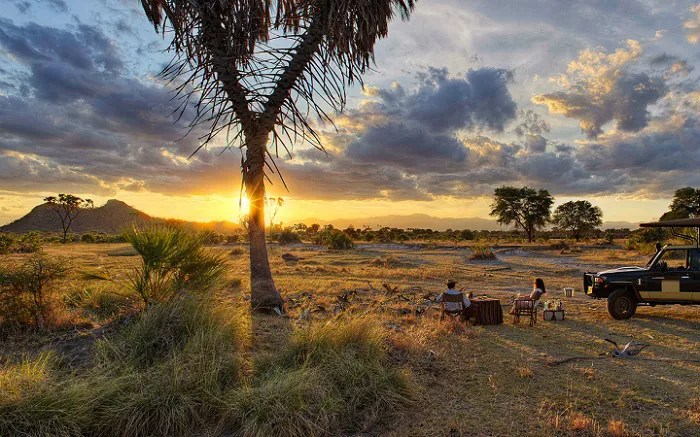MERU NATIONAL PARK, KENYA — Once the backdrop of a global conservation movement, Kenya’s Meru National Park is writing a new chapter—one defined by resilience, climate adaptation, and community-led stewardship.
Stretching across 870 square kilometers of northeastern Kenya, Meru is a landscape of golden savannah, dense forests, and rugged bushland. Home to elephants, lions, reticulated giraffes, and elusive leopards, the park stands as one of Kenya’s most significant ecological and historical landmarks. Its legacy dates back to the mid-20th century, when George and Joy Adamson raised Elsa the lioness—an orphaned cub who became the first lion successfully rehabilitated and released into the wild, immortalized in the film Born Free.
But Meru’s story has not been one of uninterrupted success.
In the decades following the Adamsons’ deaths—Joy in 1980 and George in 1989—the park suffered from neglect, rampant poaching, and declining tourism. Wildlife populations plummeted, rhinos vanished, and Meru teetered on the edge of being de-proclaimed altogether. At its nadir, discussions were held about converting parts of the park into farmland.
That trajectory began to change in 1999 with the opening of Elsa’s Kopje, a conservation-focused eco-lodge built into the granite outcrops of Mughwango Hill. Supported by prominent conservationists including Dr. Richard Leakey and Virginia McKenna, the lodge became a focal point for Meru’s rehabilitation, partnering with the Kenya Wildlife Service and the Born Free Foundation to restore wildlife populations and reestablish the park as a cornerstone of Kenya’s conservation network.
Leading the charge today is Grace Leonard Waidaka, general manager of Elsa’s Kopje. As one of the few Kenyan women in her role, Waidaka represents a new generation of conservationists building on Meru’s storied past while addressing the mounting challenges of the present—chief among them, climate change.
Climate Pressures Mount
Kenya has experienced increasingly erratic weather patterns in recent years, including higher temperatures and significantly reduced rainfall. Meru has not been immune. Rainfall in the park has declined to just a third of the levels recorded in 1990, and average temperatures have risen by up to 1°C. The result: prolonged droughts, vegetation loss, and wildlife increasingly clustered around dwindling water sources.
During the severe drought of 2022, much of Kenya saw riverbeds run dry and crops fail. Although Meru’s trio of perennial rivers spared it from the worst, conservationists view the region’s current state as a harbinger of escalating climate threats.
At Elsa’s Kopje, Waidaka and her team witness the effects daily. Head guide Mohammed and other staff members coordinate closely with conservation partners to monitor animal health, track movements, and respond to injuries. Their data feeds into broader efforts aimed at enhancing climate resilience for both flora and fauna.
Tourism operations have also adopted a sustainability-first ethos. The Elewana Collection, which operates the lodge, incorporates renewable energy, minimizes fuel consumption, and invests in initiatives that benefit local communities and reduce tourism’s ecological footprint.
Conservation Beyond Wildlife
Meru’s revival hinges not only on protecting its biodiversity but also on empowering the communities that surround it. Poverty, food insecurity, and limited access to education can undermine conservation goals, making it essential to address human needs in tandem with ecological priorities.
Through the Land & Life Foundation, Elsa’s Kopje supports nearby Oregate Primary School with scholarships, supplies, and infrastructure improvements. Education is treated as a foundational component of climate resilience, with local children encouraged to see themselves as future conservation leaders.
Annual community sessions organized by Waidaka’s team focus on climate education—linking the abstract realities of global warming to the very tangible experiences of drought, crop failure, and grazing challenges. These dialogues foster a shared sense of responsibility and deepen local engagement in conservation and eco-tourism.
A Living Legacy
Meru’s conservation journey is far from over. It remains a battleground for wildlife protection, a laboratory for climate adaptation, and a beacon of what collaboration can achieve.
The park now hosts more than 75 lions, likely descended from Elsa’s lineage, along with thriving populations of elephants, cheetahs, Grevy’s zebras, and reintroduced rhinos. But maintaining this progress requires more than just historical reverence—it demands daily, deliberate action.
Grace Leonard Waidaka summed up her mission with quiet conviction: “Everything I do is for the next generation.” Her words reflect the ethos that now defines Meru. The park is not a relic of the past—it is a dynamic, evolving landscape shaped by those willing to fight for its future.
As climate pressures grow and conservation resources face increasing strain, Meru stands as a testament to what is possible through steadfast leadership, community collaboration, and an unwavering commitment to the wild. Its survival is not guaranteed. But its revival, hard-won and ongoing, proves that second chances can matter—especially when people choose to make them count.


